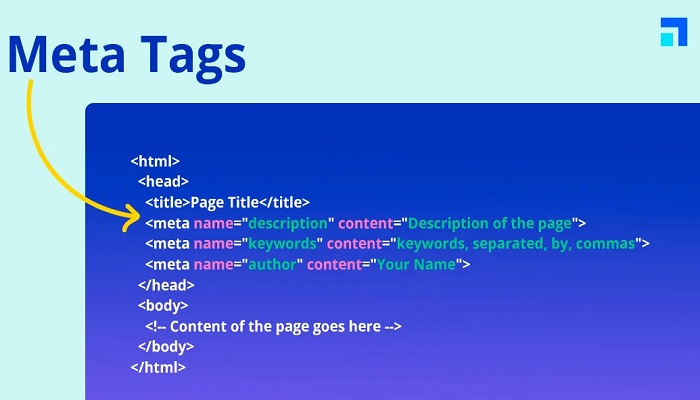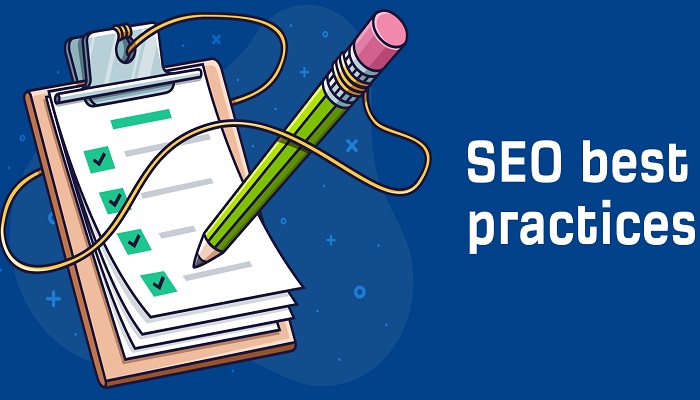This article will explain all that you need to know about SEO Best Practices.
Search engines rank content higher in search results that is well-researched, well-written, properly formatted, and beneficial for the reader.
Keep this in mind, these are just basic requirements. If you want to rank higher in search engine results, you need to write content that not only satisfies the above-mentioned requirements but is also optimized for SE as well.
This is where best SEO practices come into play. This term refers to a set of tasks that are followed before, while, and after writing content with the goal rank it on the first page.
Several useful SEO practices can be helpful in this regard. In this article, we are going to take a look at those practices in complete detail.
Best SEO Writing TIPS to Rank Higher in Search Results
1. Do proper research to understand what you have to write:
This is obvious, but to write content that is optimized for search engines, you have to perform thorough research.
Doing proper research will allow you to provide the most credible and reliable information to your audience.
Not only this, but doing proper research will give you insights into how you can address readers’ concerns, answer their questions, and add value for those seeking valuable information.
This is an essential tip, as it will act as the base of your entire content. The stronger the research you will, the more quality and valuable content you can create.
According to the latest Google Helpful Content Update, the search engine has clearly mentioned that it will only rank higher which is helpful and valuable for the readers.
2. Use Keywords

You will not be able to rank the written content higher in search results without making use of good keywords.
Keywords are the specific terms that users mostly search on the internet.
For example, if someone wants to buy a leather jacket, then there are chances that he would search for “best leather jacket” or “best leather jacket for men”. These will then be referred to as keywords.
Let’s say, you are writing an article on “leather jackets”, then you must have to load your content with most search keywords related to the leather jacket to rank higher in search engine results.
So, whenever a user searches for a specific keyword related to “leather jackets”, your content will automatically come up as a result in front of the user.
However, the few things that you must take into consideration while incorporating keywords in your content.
- Make sure they are relevant and properly organized.
- Use the focus keywords (the one on which you’re writing) in your article title.
- Emphasize the placement of most keywords in the initial portion of your article
- Use keyword variation to avoid stuffing
3. Focus on your article title
When it comes to ranking content higher in search results, the title is super important. It allows both readers and search engines (Google) to understand what your content is about.
That is why, you should come up with a most relevant yet catchy title before you start writing.
There are many useful tips and tricks that you can adopt to make an SEO-optimized title. Here are a few ones to get started.
- Keep your title clear and straightforward: Your title should reflect the content you have discussed in the article. Do not try to misguide the readers. In a general word, you should create a title that tells your readers what the article is about.
- Use interesting words: Try to use interesting or catchy words like “We have it on our website” or “We have got you covered”. Using these kinds of words will insist readers take an interest in your article.
- Make use of numbers: Try to use numbers or stats in your title, such as “3 ways explained” or “10 best”. This makes readers think that your article has the information that they are looking for.
- Be concise: You have to stick the title to a maximum of 60 characters so that the reader can see the entire title in the search result.
4. Outline your article before getting started
Outlining the article before getting started is an effective tip for SEO writing. An outline acts as a skeleton for the rest of the article. Not only this, it also prevents the writers from forgetting some headings or points.
Below we have discussed some of the most useful tips to create an effective outline that you can use as a skeleton for SEO content writing.
- Create a list of main headings that you will discuss in the article
- Organize these headings in a way that each heading makes sense with the other
- Flush out the main points
- Review and adjust (if required)
When writing content, the outline will also help you to better understand and determine imperfections like which section needs to be described in detail, and which needs to be discussed in a quick note.
5. Write long-form content
After seeing the heading, most readers will think that it refers to writing a blog post article with a lot of words. Congratulations, you were thinking right.
Writing long-form content refers to creating content that contains more than 1000 words, usually 2k to 3k words in it.
Writing long-form content can have several SEO benefits including increased visibility in search results.
A study conducted shows that long-form can quickly dominate ranking as compared to short pieces of content.
However, while writing long-form content you should take care of content thoroughness since the main purpose of long-form content refers to how exhaustive it is.
Additionally, you should also avoid adding fluff and other words to increase the word count. Instead, you should try to your topic comprehensively.
For example, a long-form article titled “Things you should eat to lose weight” should cover different meals that can help you lose weight, their recipes, and their maximum intake per day.
On the other hand, a short-form article will only cover a single topic “different meals that you should lose weight”.
So, this article will only refer to as a piece of information (not as a comprehensive guide to “losing weight”) and will surely require a lot of SEO efforts in order to rank higher in search results.
6. Properly Structure content throughout the article
You will need to lay out your content for both readers and search engines (Google).
The content structure/style you have to follow will depend on the type of content you’re creating. But there are some universal tips that you should know:
- Headings: Headings are signposts that not only help you to structure the content but also provide a quick idea to the readers what things will be discussed in it.
- Note: Search engines also scan your headings before fetching the rest of your content and then decide what piece of information has the potential of ranking higher.
- Paragraphs: You should always keep your paragraph short for maximum readability. If you provide your readers with a wall of text (text containing long paragraphs, and sentences), this makes them feel bored. There is also a strong chance that they will go to another website to find the required information. Of course, sometimes you have to go with long paragraphs when you are trying to explain something really complex. But remember it is fine only “sometimes” not “every time”.
- Make use of bullets and lists: Both these elements are loved by Google and also by readers. These help to understand better what the writer is trying to say.
- Tip: Try adding bullets/lists in each heading, this will make your content look attractive and readable. To show you a good example of structuring the content, check the image below:
7. Make sure your content is unique and plagiarism-free:
Plagiarism is a serious issue and can greatly affect the performance of your content in search results.
The reason for saying this is that, Google strictly deals with content that is copied from others.
Therefore, after writing content you need to ensure that it is free of plagiarism.
The likelihood of it being completely plagiarism-free will increase both its rankings on Google and its engagement with readers.
This is because plagiarism-free content gives a clear indication that the writer has spent ample time and effort in coming up with unique content.
Now the question here is how you can ensure that your written content is 100% unique and free from any plagiarism traces.
The quickest way to ensure this – is by checking it with an online plagiarism checker. The checker works by comparing the content with millions of sources available on the internet to find any matches of copied content.
After completing the process, the tool provides a detailed plagiarism report as well. This way, you can easily ensure the originality of your content before making it live on the website, etc.
8. Meta Description Matters:

A Meta description is an HTML tag that is used to provide a quick summary of the entire article.
That’s why, while writing it you must have to keep it short, and interesting, while also elaborating on the main topic in it. You have to pay attention to Meta description because:
- It helps your content rank in search results
- It allows search engines to understand and categorize your content
It acts like a pitch that tells the readers this page contains the information they are looking for.
Final Words
Writing SEO-optimized content will not only impress readers but also have maximum chances of ranking higher in search results.
By properly following the tips mentioned in this article, you can create that is tailored to both Google and the user’s needs.
RELATED ARTICLES


